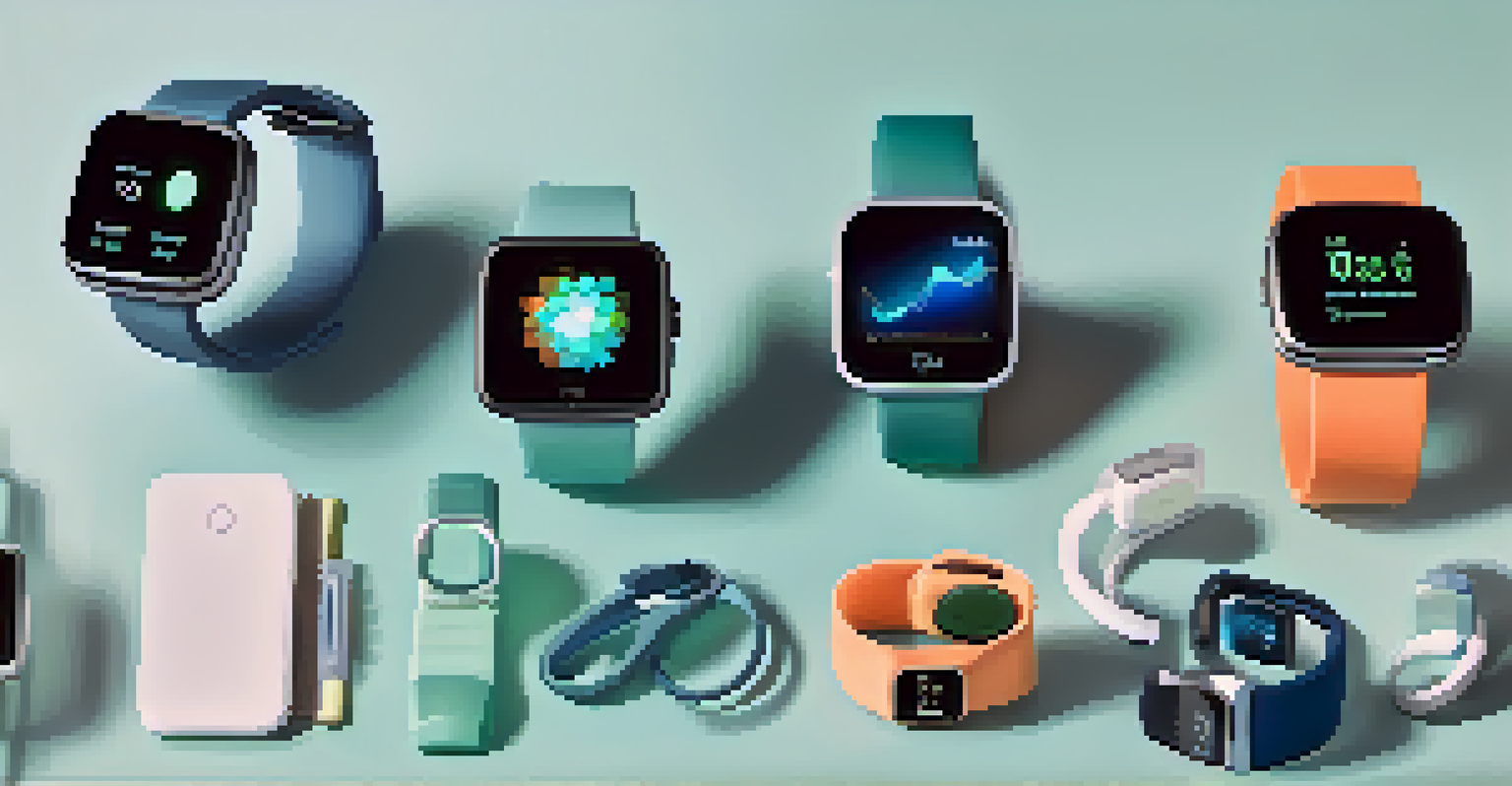Remote Patient Monitoring: Benefits and Challenges Ahead

Understanding Remote Patient Monitoring and Its Importance
Remote Patient Monitoring (RPM) involves using technology to monitor patients' health data outside traditional clinical settings. This innovative approach allows healthcare providers to keep an eye on patients' vital signs, medication adherence, and overall well-being from a distance. Imagine being able to manage chronic conditions like diabetes or heart disease without frequent trips to the doctor's office!
Remote monitoring allows healthcare providers to not only keep an eye on their patients but also to empower patients to take an active role in their own health management.
RPM is especially crucial in today's fast-paced world, where time and accessibility can be barriers to effective healthcare. By utilizing devices like smartwatches and mobile apps, patients can share their health information seamlessly with their providers. This not only enhances the patient experience but also empowers individuals to take charge of their health.
Moreover, RPM plays a significant role in preventive care, enabling early detection of potential health issues. By analyzing real-time data, healthcare professionals can intervene before conditions worsen, ultimately reducing hospitalizations and healthcare costs. It's a win-win for everyone involved!
Benefits of Remote Patient Monitoring for Patients
One of the standout benefits of RPM is the convenience it offers patients. No longer do individuals need to schedule multiple in-person visits; they can connect with their healthcare providers from the comfort of their homes. This flexibility can lead to improved patient satisfaction and adherence to treatment plans.

In addition to convenience, RPM can enhance patient engagement. With access to their health data, patients can become active participants in their care journey. For example, a patient managing hypertension can track their blood pressure readings daily and share them with their doctor, fostering a collaborative approach to health management.
RPM Enhances Patient Convenience
Remote Patient Monitoring allows patients to connect with healthcare providers from home, reducing the need for in-person visits and improving patient satisfaction.
Furthermore, RPM can help bridge the gap for underserved populations. Those living in rural areas or with mobility issues can benefit from continuous monitoring without the challenge of traveling long distances. This increased accessibility can lead to better health outcomes across diverse communities.
How Remote Patient Monitoring Benefits Healthcare Providers
Healthcare providers also stand to gain significantly from RPM. With continuous access to patient data, they can make more informed decisions about treatment options and interventions. Imagine having a detailed view of a patient's health trends over time—this data can be invaluable for tailoring personalized care plans.
The future of healthcare lies in the combination of technology and patient engagement, making remote patient monitoring an essential tool for the modern healthcare system.
Additionally, RPM can help reduce the burden on healthcare systems. By decreasing the number of unnecessary in-person visits, providers can allocate their time and resources more effectively. This ultimately allows for a more efficient healthcare delivery system, benefiting both providers and patients.
Moreover, RPM can enhance patient-provider communication. With real-time data sharing, healthcare professionals can quickly address concerns and adjust treatment plans as needed. This proactive approach fosters a stronger relationship between patients and their providers, leading to better overall health outcomes.
Challenges Faced by Remote Patient Monitoring Implementation
Despite its many advantages, the implementation of RPM is not without challenges. One of the primary hurdles is the need for reliable technology and internet connectivity. Patients in areas with poor internet access may struggle to benefit from RPM, creating disparities in healthcare delivery.
Another significant challenge is data privacy and security. With the increasing use of technology in healthcare, concerns about protecting sensitive patient information have become paramount. Healthcare providers must ensure that they are using secure platforms to safeguard data and comply with regulations like HIPAA.
Data-Driven Decisions for Providers
Healthcare providers benefit from continuous access to patient data, enabling tailored care plans and more informed treatment decisions.
Lastly, some patients may resist adopting RPM technology due to a lack of familiarity or comfort with digital tools. To overcome this barrier, healthcare providers must invest in patient education and support, ensuring that individuals feel confident using the technology to manage their health.
Technological Innovations Driving Remote Patient Monitoring
The success of RPM is largely driven by technological innovations, from wearable devices to mobile applications. Wearables like fitness trackers and smartwatches can monitor vital signs such as heart rate and activity levels, providing valuable data to healthcare providers. This technology allows for seamless integration of health monitoring into daily life.
Telehealth platforms have also emerged as vital players in RPM. These platforms facilitate virtual consultations, enabling healthcare providers to review patient data and offer guidance without needing an in-person visit. This combination of RPM and telehealth creates a comprehensive approach to patient care.
Artificial Intelligence (AI) is another game-changer in the RPM landscape. By analyzing vast amounts of data, AI can help identify trends and predict potential health issues, allowing for timely interventions. This means that healthcare providers can focus on high-risk patients and deliver targeted care where it’s most needed.
Regulatory Landscape for Remote Patient Monitoring
Navigating the regulatory landscape is essential for the successful implementation of RPM. Various government bodies and organizations are establishing guidelines to ensure that RPM technologies are safe and effective. These regulations also aim to protect patient privacy and data security, which are critical in today's digital age.
In the United States, the Centers for Medicare & Medicaid Services (CMS) has introduced reimbursement policies for RPM services, encouraging providers to adopt these technologies. This financial support is vital for healthcare systems looking to integrate RPM into their practices without incurring significant costs.
Challenges in RPM Implementation
Despite its advantages, RPM faces hurdles such as technology reliability, data privacy concerns, and patient resistance to new tools.
However, the regulatory environment is continuously evolving, and healthcare providers must stay informed about changes that could impact RPM. By understanding and adapting to these regulations, providers can ensure they are compliant while delivering the best possible care to their patients.
The Future of Remote Patient Monitoring: A Look Ahead
As technology continues to evolve, the future of RPM looks promising. We can expect to see even more advanced devices and applications that offer greater functionality and ease of use. This evolution will likely enhance patient engagement and improve health outcomes across various populations.
Moreover, the integration of RPM with other healthcare technologies, such as electronic health records (EHRs), will create a more cohesive healthcare experience. By having all patient data in one place, providers can make more informed decisions and deliver personalized care.

Ultimately, the success of RPM will depend on collaboration among stakeholders, including healthcare providers, technology developers, and policymakers. By working together, we can address the challenges and maximize the benefits of remote patient monitoring, paving the way for a healthier future.